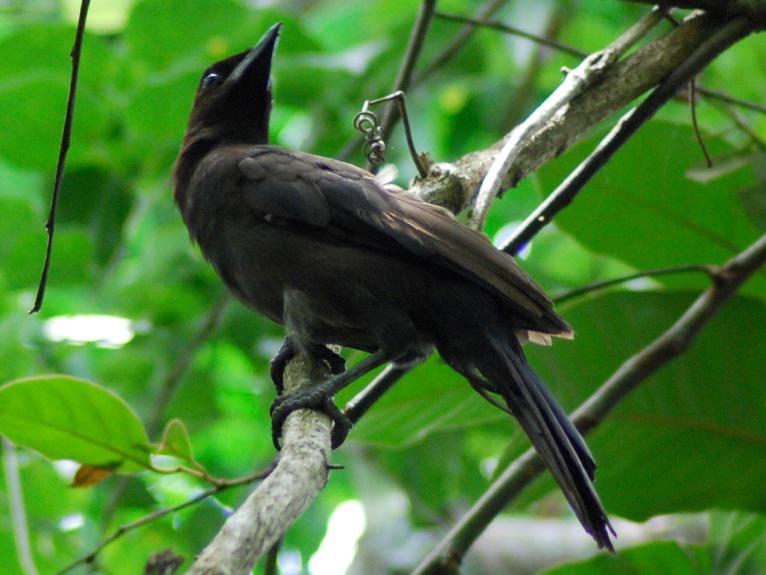Andrea P. Loayza
Other projects
31 Jan 2011
Ecology and Recruitment Dynamics of Myrcianthes Coquimbensis: A Threatened Endemic of the Atacama Coastal Desert
Connect patterns of seed dispersal of Guettarda viburnoides (RUB.) by tufted jays and toucans to patterns of adult establishment in different savanna habitats.

C. cyanomelas. © Andrea Loayza.
Seed dispersal is the demographic bridge which links the end of the reproductive cycle of adult plants with the establishment of their offspring. It is a key process for plant population dynamics because it creates the initial pattern for adult recruitment by allowing seeds to reach suitable microhabitats and increase their chance for survival and establishment. However, seed dispersal is only one of the many concatenated processes that mediate seed deposition and adult establishment; other factors that also play critical roles in determining recruitment patterns include: the identity of the dispersal agents (i.e., frugivores), their effects on germination rate and/or success, the habitats into which frugivores disperse the seeds and the effect of these habitats on seed survival, seedling emergence, and adult recruitment.
The succession of these processes, by which seeds are dispersed away from the parent plant, germinate to seedlings, and establish as adult plants, has been termed the “seed dispersal cycle”. Our understanding of the consequences of animal-mediated seed dispersal on plant recruitment will ultimately depend on the degree to which we effectively integrate seed dispersal with plant population growth. Thus, the proposed study is designed to address frugivore effects on plant population growth and spread by considering data on quantitative and qualitative aspects of seed dispersal and incorporating it into population projection matrices.
This study will explicitly assess the processes that mediate seed dispersal and recruitment patterns using Guettarda viburnoides (Rubiaceae) as a model system. It will be conducted in a ‘naturally’ fragmented landscape, where discrete habitats are unambiguously identifiable, and used in different degrees by dispersers of G. viburnoides. Three approaches will be employed as follows:
1) Seed deposition habitats and seed shadows of individual dispersers will be analysed using direct observations and radiotelemetry techniques.
2) post-dispersal seed fate will be determined experimentally by dispersing seeds into different habitats.
3) species-specific consequences of seed dispersal for recruitment and population growth of G. viburnoides in different habitats within the landscape will be assessed via demographic modelling.
The importance of this study from a conservation perspective is two-fold. First, this study examines the importance of species interactions by evaluating the degree to which ecological function can be substituted by different members of an ecological guild. Secondly, this study examines the importance of birds as ‘mobile-links’ maintaining connectivity and ecological processes among forest elements in fragmented landscapes.